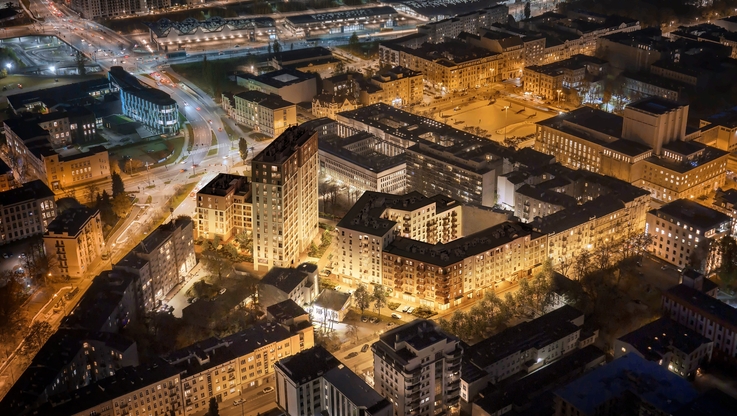Pobierz materiał i Publikuj za darmo
New York - In September 2011 a neutrino beam from a CERN lab in Geneva, Switzerland to the 454 miles remote INFN Gran Sasso lab in Italy seemed to travel 0.0025 percent faster through earth than speed of light in a vacuum. Some undisputed pillars of classical physics will completely totter if this experiment turns out to become repeatable. Einstein theories actually allow the existence of non-detectable particles moving faster than speed of light. These particles are called tachyons. However, there is no possibility to use such theoretical tachyons as a transport medium for information. Einstein’s maximum information speed is strictly limited to the speed of light. The spectacular aspect of such a detectable neutrino beam would be less the discovery that neutrinos may be actually tachyons, but an information speed above the speed of light barrier. As observations of supernova bursts did not register neutrino beams long time before the arrival of the photons of these cosmic catastrophes, the experiment at CERN requires very critical reconsideration. Neutrinos from the supernova 1987a were detected by the Kamioka Nucleon Decay Experiment detector in Japan. The neutrinos arrived only about three hours before light from supernova event reached Earth, because of the fact that light is trapped in the supernova for a short time period. This would indicate that neutrinos rather travel at speed of light. If the CERN results are correct, the neutrinos should have arrived years rather than hours before the supernova’s light burst.
There are two quite simple explanations for this seeming experimental contradiction to Einstein’s limitation of speed of light in a vacuum and his postulate that baryonic matter cannot reach this barrier because of their relativistic mass increase and thus the infinite energy that would be needed.
1) If the experiment is not repeatable, there was a yet unknown error in the evaluation method, as neutrinos do hardly interact with matter and, therefore, are extremely difficult to be detected.
2) In case the experiment is repeatable or if neutrinos are travelling exactly at speed of light, the simplest explanation would be that four-dimensional space-time of a vacuum is not purely a geometrical grid as assumed by Einstein, but a peculiar kind of energetic storage medium that just was not captured with classical physics, so far. The known fact about a medium is that certain particles can actually travel faster than speed of light through this medium, causing usually light phenomena that are known as Cherenkov radiation. This Cherenkov Effect is comparable to the sonic boom produced by a supersonic plane. If neutrinos travel exactly at the speed of light, or even above this barrier, they could acquire their extremely small mass by a similar effect, explaining why we do not notice a tremendous relativistic mass increase despite their high relative speed at or very close to speed of light, in contradiction to Einstein’s imaginations and equations for baryonic masses.
But how could such a peculiar kind of space-time medium look like? It definitely cannot be the type of ether as assumed by Lorentz and other scientists still during all the years of Einstein’s geometrical space-time approach, because speed of light would consequently not be constant for any observer.
This riddle gets a first feasible solution if Einstein’s picture of space-time is enriched with quantum mechanical aspects and additionally with a rotary element of the well-known effect of a relativity of simultaneity of events; a sort of quantum energy foam appears this way in the vacuum of space. Einstein did not consider any quantization of time and of length in his special and general theory of relativity because such a limitation at infinitesimal values was not yet discovered and discussed at that time. Neutrinos where not known either. The very first quantum mechanical aspects entered physics only years later in form of Heisenberg’s uncertainty principle and Planck’s quantization scale.
Since Einstein’s era we do know that simultaneous events for an observer in a spaceship along the ship’s moving axis will change into sequential events for a remaining observer in case of high relative speed because the speed of light stays constant for both observers and, therefore, causing the so called relativity of simultaneity of events. In case we limit now for example the distance between two simultaneous light flashes at an infinitesimal small minimum value, a remaining observer would read at a certain speed of the spaceship these simultaneous events as sequential events. This has certainly an energetic impact for the remaining observer because Einstein’s space-time grid got this way a kind of energy storage effect along his or her timeline for the second flash. This well-known function of Einstein’s special theory of relativity can be drawn in a two-dimensional graph with simultaneous events captured on an x-length axis and sequential events captured on a y-time-axis.
Changing now simultaneous events into sequential events according to the proven and undisputed formulas of relativistic mechanics and considering this simple quantization scheme at the low limits of space distance and time progress generates quantized rotary elements within the overall picture. This leads to an extended space-time structure with relative dark energy and dark matter storage areas and to a feasible explanation for the strange nature and behavior of neutrinos, no matter if they finally move exactly at the speed of light, or closely below, or, completely unexpectedly, even slightly above this level .
Henryk Frystacki, PhD
Member of Russian Academy of Technical Sciences, Moscow
External Board Member of Institute for Gravitation and Cosmos at Pennstate University, USA
Homepage www.frystacki.de
phone: +49 08157924137
Źródło informacji: APA-OTS
Pobierz materiał i Publikuj za darmo
bezpośredni link do materiału
| Data publikacji | 24.10.2011, 12:00 |
| Źródło informacji | PAP |
| Zastrzeżenie | Za materiał opublikowany w serwisie PAP MediaRoom odpowiedzialność ponosi – z zastrzeżeniem postanowień art. 42 ust. 2 ustawy prawo prasowe – jego nadawca, wskazany każdorazowo jako „źródło informacji”. Informacje podpisane źródłem „PAP MediaRoom” są opracowywane przez dziennikarzy PAP we współpracy z firmami lub instytucjami – w ramach umów na obsługę medialną. Wszystkie materiały opublikowane w serwisie PAP MediaRoom mogą być bezpłatnie wykorzystywane przez media. |










